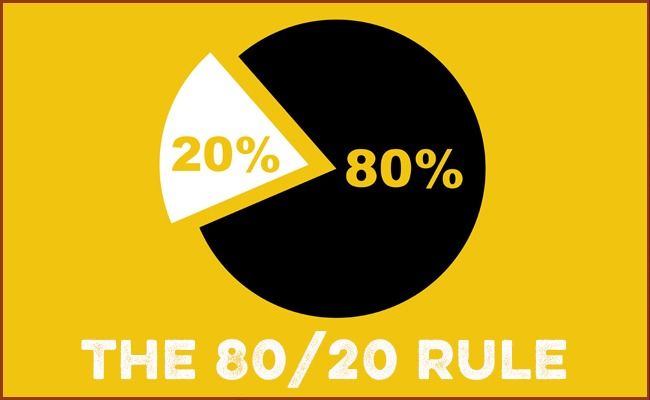You are almost certainly reading this because you searched for ‘time management techniques.’ Like everyone else, you want to make the most of your time (who doesn’t?) But you also have so much going on that it’s easy to feel the hours slip through your fingers.
The truth is, time itself isn’t the problem. How we manage it is. With a few time management techniques, though, you can stop chasing the clock and start owning your day.
I researched through several sources and compiled this list specifically for you. Yes you.
1. The Eisenhower Matrix – Urgent Vs. Important
Replying to your emails is urgent, but is it important? President Dwight D. Eisenhower (34th president of the U.S.A.) created the Eisenhower Matrix using the simple idea: Not everything that feels urgent is important, and not everything important will feel urgent.
The framework sorts your tasks into four categories:
i.) Urgent and Important – These are priorities with looming deadlines. For instance, submitting a report that is due today.
ii.) Important but not Urgent – These are mostly long-term success builders. For example, building a business strategy. It doesn’t demand your attention right now, but investing your time here will pay off in the future.
iii.) Urgent but not Important – Such tasks often feel pressing but don’t really move you forward. For example, a last-minute meeting that adds little value.
iv.) Not urgent and not Important – These are at the bottom of the barrel and are considered time-wasters. An excellent example is scrolling through social media aimlessly when you should be working.
List all the tasks you need to complete, then place them in their correct quadrant. Now it’s easier to know what needs to get done and what you can reschedule.
2. Pomodoro Technique – Work in Sprints

The Pomodoro technique is a deceptively simple technique that turns time into a game. The idea is to break your work into focused 25-minute sessions called “Pomodoros” and then take a short 5-minute break.
On the fourth Pomodoro, you give yourself a longer 15 to 30-minute break.
This technique is perfect for those of us who start work really focused, then somewhere along the way end up deep in the TikTok rabbit hole.
It works because you’re not committing to ‘work until it’s done.’ Instead, you focus on one sprint at a time. You are tricking your mind into making tasks seem less intimidating.
3. Time Blocking – Own Your Calendar
As a procrastinator, I’ll look at my to-do list and think, ‘Yeah, I’ll get to that later.’ The problem is that ‘later’ never comes. And important tasks almost always end up unaccomplished.
The Time Blocking technique solves this by giving every task a home on the calendar. Instead of working blindly, it helps me divide my day into chunks of time, each dedicated to a specific task.
There is less room for distractions when you book your calendar with intentional work slots. Plus, you become realistic about how much you can get done in a day.
With time blocking, you don’t just plan on what to do, you also decide when to do it.
4. Pareto Principle – The 80/20 Rule

80% of your results come from just 20% of your efforts. This is according to Italian economist Vilfredo Pareto.
Once we understand this, the onus now becomes to identify this magical 20% that delivers the biggest impact and double down on it. For example:
- If you are a blogger and 20% of your posts bring in 80% of your traffic, focus more on writing those topics.
- And if you are in sales and 20% of your clients bring in 80% of your revenue, spend more time nurturing those relationships.
When we ignore the low-value tasks and instead focus on the high-impact ones, we stop spreading ourselves thin and start producing bigger results (with less effort).
5. Getting Things Done (GTD)
At times, a lot is happening in our lives that our brain feels like 20 browsers are open at once. David Allen created the Getting Things Done to get tasks out of our heads and into a trusted system.
The process includes five steps:
i.) Capture – Journal down everything that’s on your mind. Emails, errands, goals, everything.
ii.) Clarify – Expound on each item and state whether they are actionable.
iii.) Organize – Categorize them into do now or schedule for later, or even delegate, if that’s an option.
iv.) Reflect – Review your list regularly to keep it relevant and fresh.
v.) Engage – Do the tasks in the proper order.
This technique works because you convert your brain from a chaotic storage into a focused problem-solver.
6. Eat That Frog
Mark Twain said, “Eat a live frog the first thing in the morning and nothing worse will happen to you the rest of the day.”.
Brian Tracy converted this into a mantra: do the hardest, most important task of your day before anything else.
Why? Because your focus and willpower are the strongest in the morning. If you can get the big and intimidating task out of the way early, the rest of your day feels lighter. Once it’s done, you’ll ride that accomplishment high into the rest of your work.
Note that your “frog” isn’t necessarily the longest task. It’s the one with the most impact (and probably the one you are avoiding).
7. Task Batching

Switching between different types of work slows you down and wears you out. Task batching tries to fix this by grouping similar tasks together and doing them in one go.
For instance, write and schedule an entire week’s worth of social media posts in one sitting. Or pay all your bills at once rather than on different days.
Once you are in a specific type of task, you stay there and only move on once you’re done. That means you get faster results and less mental fatigue.
8. Parkinson’s Law – Beat the Clock
Tell yourself you have all day to write a blog post, and guess what, you’ll take all day. Give yourself four hours, and suddenly, you are laser-focused. That’s Parkinson’s Law in action. It states that a task expands to fill the time you have allocated to it.
We create urgency when we give tasks deadlines. You stop overthinking and start doing. It’s the same reason you can clean your entire house in 20 minutes when unexpected guests are “five minutes away.”
9. Kanban Boards – Visual Progress Tracker
Seeing your progress can be a huge motivator. Kanban Boards give you a visual progress of every task. You can keep it old-school with sticky notes on a wall, or go digital with productivity apps like Trello and ClickUp.
You create columns like To Do and In Progress, then move the tasks across as you work on them. That movement of dragging a task from one column to another is a small but powerful hit of satisfaction.
10. Delegation – Pass the Baton
At times, the secret to being productive without burning out is to stop doing everything yourself. Pass the baton to someone else. Strategically handing tasks to the right person can get the job done faster and more efficiently than if you tackled it alone.
What’s even better is that it frees up your time for high-impact tasks that really need you.
Set Smart Goals
Ultimately, managing time is less about the clock and more about managing yourself. Take control of how you spend your hours. At times, this may be a mix of different techniques, and that’s fine.
The goal is to experiment and keep adjusting until you find something that suits you perfectly.
Featured Image from Pinterest.








